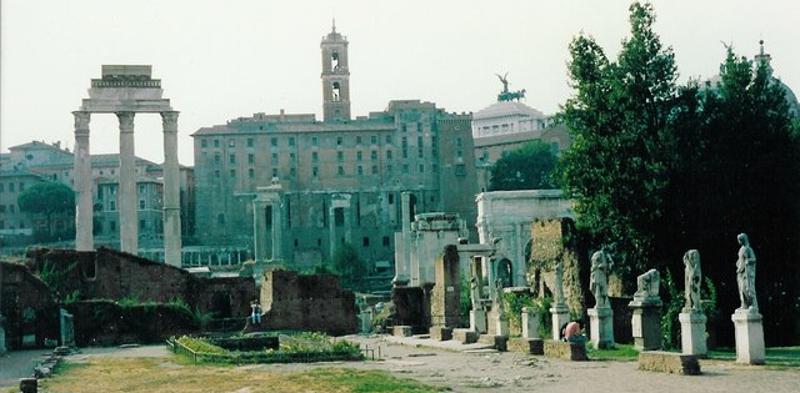My diary
http://sights.seindal.dk/sight/173_House_of_the_Vestal_Virgins.html
The House of the Vestal Virgins is a cultural landscape that reveals the double standard that the Romans placed upon gender inequity. The men were known for being savage and brutal, yet they expected the women of Roman to be pure, virgins to uphold the morals and character that the men lost. The women were not viewed as equals, in fact they were considered inferior to men. However, men held them to higher standards than men themselves. The cultural landscape reflected this stratification with the placement of the House of the Vestal Virgins, right below the temple of Saturn, and the arch of virtue and fortune. The men did not have access to this house, yet they were able to look down upon it every day as an
kmullen1
22 chapters
16 Apr 2020
Rome 2017: (4) The House Of Vestal Virgins
http://sights.seindal.dk/sight/173_House_of_the_Vestal_Virgins.html
The House of the Vestal Virgins is a cultural landscape that reveals the double standard that the Romans placed upon gender inequity. The men were known for being savage and brutal, yet they expected the women of Roman to be pure, virgins to uphold the morals and character that the men lost. The women were not viewed as equals, in fact they were considered inferior to men. However, men held them to higher standards than men themselves. The cultural landscape reflected this stratification with the placement of the House of the Vestal Virgins, right below the temple of Saturn, and the arch of virtue and fortune. The men did not have access to this house, yet they were able to look down upon it every day as an

encouragement that even if they had lost all morale, at least the women were living a life that would please the gods. The cultural landscape was beautiful with water and greenery to reflect the natural beauty of the women. They were the epitome of what a woman should have been at the time and this was reflected by the architecture of the building which they resided.
1.
Rome 2017: Overview
2.
Rome 2017: (1) The Colomn of Trajan
3.
Rome 2017: (2) The Capitoline Wolf and The Twins
4.
Rome 2017: (3) The Alter of Peace (Ara Pacis)
5.
Rome 2017: (4) The House Of Vestal Virgins
6.
Rome 2017: (5) The Bust of Constantine
7.
Rome 2017: (6) The Equestrian Sculpture of Marcus Aurelius
8.
Rome 2017: (7) The Miliarium Aureum
9.
Rome 2017: (8) The Dying Gaul
10.
Rome 2017: (9) The Head of Lucius Junius Brutus
11.
Rome 2017: (10) The Boxer at Rest
12.
Rome 2017: (11) Augustus of Prima Porta
13.
Rome 2017: (12) Saint Paul's Statue
14.
Rome 2017: (13) Moses
15.
Rome 2017: (14) Santa Sabina
16.
Rome 2017: (15) The Holy Stairs
17.
Rome 2017: (16) The School of Athen's
18.
Rome 2017: (17) Disputation over the Holy Sacrament
19.
Rome 2017: (18) Saint John’s Lateran
20.
Rome 2017: (19) Danae
21.
Rome 2017: (20) Victor Emmanuel II
22.
Rome 2017: Conclusion
Share your travel adventures like this!
Create your own travel blog in one step
Share with friends and family to follow your journey
Easy set up, no technical knowledge needed and unlimited storage!
© 2025 Travel Diaries. All rights reserved.